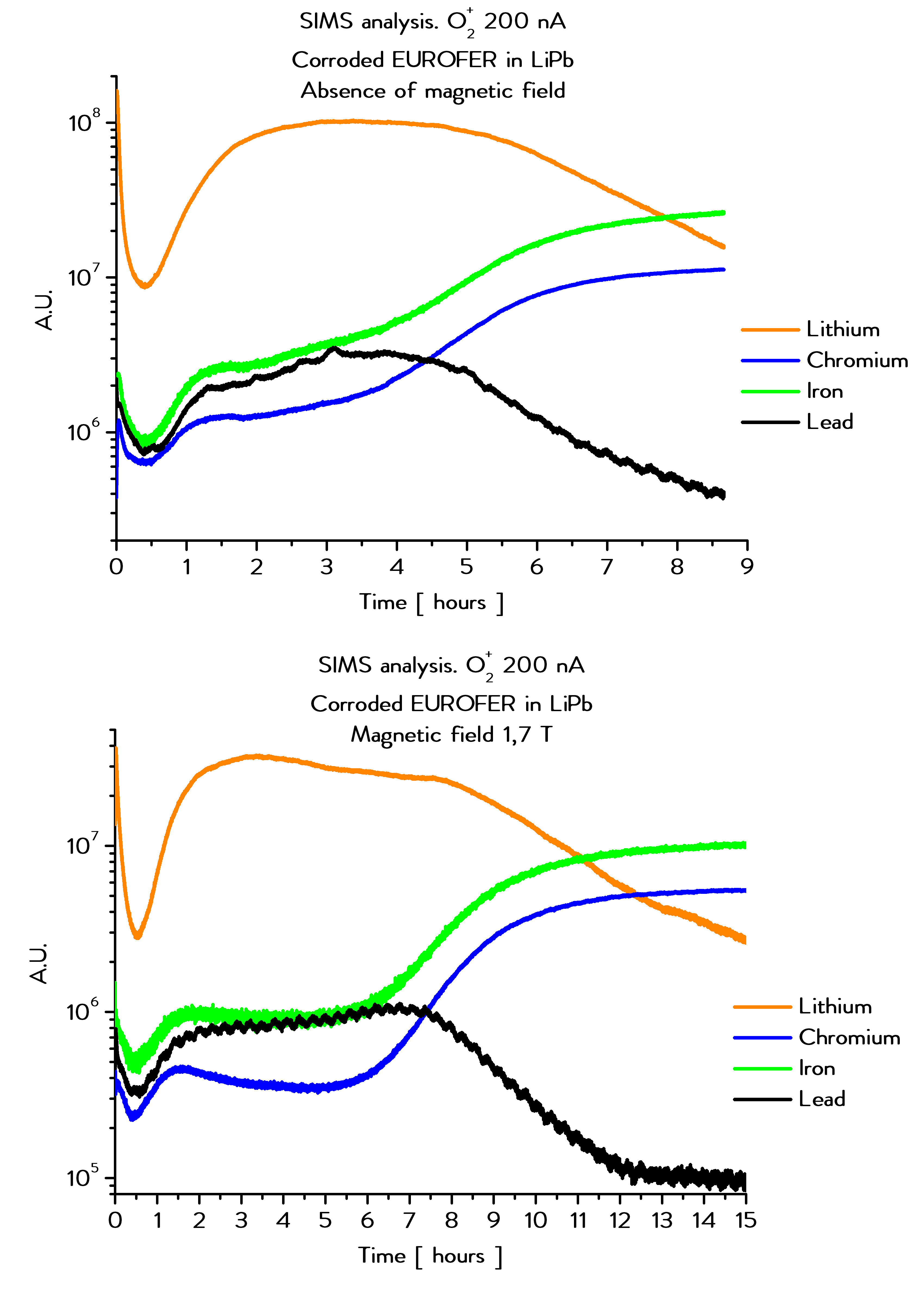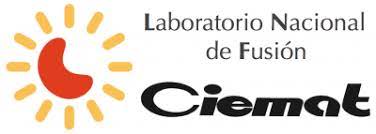It is planned to breed the reaction in future fusion reactors with lithium from solid lithium ceramics from the eutectic liquid-metal lithium-lead (LiPb). The breeder will be in direct contact with the reduced activation ferritic-martensitic (RAFM) structural steel EUROFER97. Therefore, extended data on the behavior and interaction of exposed materials are needed.
Compatibility about the interaction between LiPb and EUROFER has already been studied. However, the effect of a magnetic field has not been considered. This effect is expected to be critical because it changes the hydrodynamics of the metal flow affecting the corrosion process and interacts with the ferromagnetic steel.
Corrosion tests have been carried out simulating the experimental conditions of a fusion reactor. Several EUROFER samples were immersed in LiPb flowing, at 550ºC, 5 cm/s during 1000 hours. Moreover, a perpendicular-flow 1.7 T magnetic field has been applied in a specific part of the loop. Identical EUROFER samples were tested under the same conditions without the magnetic field.
Corrosion rate, for samples under the magnetic field action, is 2-3 times higher compared with the samples located outside the magnetic field. The magnetic field leads to the formation of regular wave structure oriented in the metal flow direction. Theoretical analysis of the magneto-hydrodynamics (MHD) flow can explain both effects.
 The corrosion process in the case of a liquid breeder is the dissolution of the structural steel – chromium and iron from EUROFER surface – into the liquid metal. In the absence of a magnetic field, corrosion occurred especially at the grain boundaries, with magnetic field corrosion occuring in the steel bulk too. Chromium and iron diffusion from the steel into the liquid metal as well as the breeder-steel interphase have been studied using SIMS since the light specimen Lithium is transparent to others techniques of analysis. The facility includes a Hiden’s MAXIM quadrupole mass analyzer (1-510 amu, 5% resolution), a Hiden IG20 O2 or Ar gas primary ion gun (ions are accelerated up to 5 keV).
The corrosion process in the case of a liquid breeder is the dissolution of the structural steel – chromium and iron from EUROFER surface – into the liquid metal. In the absence of a magnetic field, corrosion occurred especially at the grain boundaries, with magnetic field corrosion occuring in the steel bulk too. Chromium and iron diffusion from the steel into the liquid metal as well as the breeder-steel interphase have been studied using SIMS since the light specimen Lithium is transparent to others techniques of analysis. The facility includes a Hiden’s MAXIM quadrupole mass analyzer (1-510 amu, 5% resolution), a Hiden IG20 O2 or Ar gas primary ion gun (ions are accelerated up to 5 keV).
Paper Reference: Carmona Gázquez, T. Hernández, F. Muktepavela, E. Platacis, A. Shishko (2015) “Magnetic field effect on the corrosion processes at the Eurofer–Pb–17Li flow interface”, Journal of Nuclear Materials 465, 633-639
SIMS analysis of the LiPb-EUROFER97 interphase for corroded steel samples in absence of a magnetic field (top) and under a 1.7 T magnetic field effect (bottom). O2+ was used as ion gun with a 200 nA current.
Download Project Summary: AP1159
 Project summary by: Dr. Teresa Hernández, National Laboratory for Magnetic Fusion. Materials CIEMAT Avda. Complutense 22, 28040 Madrid, Spain
Project summary by: Dr. Teresa Hernández, National Laboratory for Magnetic Fusion. Materials CIEMAT Avda. Complutense 22, 28040 Madrid, Spain
To find out more about this product visit the SIMS Workstation product page or if you would like to contact us directly please Send us a Message.

